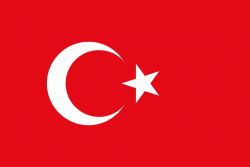Avar language
Avar (Магӏарул мацӏ, Maǥarul macʼ, "language of the mountains" or Авар мацӏ, Awar macʼ , "Avar language"), also known as Avaric, is a Northeast Caucasian language of the Avar–Andic subgroup that is spoken by Avars, primarily in Dagestan. In 2010, there were approximately 1 million speakers in Dagestan and elsewhere in Russia.
It is spoken mainly in the western and southern parts of the Russian Caucasus republic of Dagestan, and the Balaken, Zaqatala regions of north-western Azerbaijan. Some Avars live in other regions of Russia. There are also small communities of speakers living in the Russian republics of Chechnya and Kalmykia; in Georgia, Kazakhstan, Ukraine, Jordan, and the Marmara Sea region of Turkey. It is spoken by about 762,000 people worldwide. UNESCO classifies Avar as vulnerable to extinction.
It is spoken mainly in the western and southern parts of the Russian Caucasus republic of Dagestan, and the Balaken, Zaqatala regions of north-western Azerbaijan. Some Avars live in other regions of Russia. There are also small communities of speakers living in the Russian republics of Chechnya and Kalmykia; in Georgia, Kazakhstan, Ukraine, Jordan, and the Marmara Sea region of Turkey. It is spoken by about 762,000 people worldwide. UNESCO classifies Avar as vulnerable to extinction.
Country
-
Turkey
Turkey (Türkiye ), officially the Republic of Türkiye (Türkiye Cumhuriyeti ), is a transcontinental country located mainly on the Anatolian Peninsula in Western Asia, with a small portion on the Balkan Peninsula in Southeast Europe. It shares borders with the Black Sea to the north; Georgia to the northeast; Armenia, Azerbaijan, and Iran to the east; Iraq to the southeast; Syria and the Mediterranean Sea to the south; the Aegean Sea to the west; and Greece and Bulgaria to the northwest. Cyprus is located off the south coast. Turks form the vast majority of the nation's population and Kurds are the largest minority. Ankara is Turkey's capital, while Istanbul is its largest city and financial centre.
One of the world's earliest permanently settled regions, present-day Turkey was home to important Neolithic sites like Göbekli Tepe, and was inhabited by ancient civilisations including the Hattians, Hittites, Anatolian peoples, Mycenaean Greeks, Persians and others. Following the conquests of Alexander the Great which started the Hellenistic period, most of the ancient regions in modern Turkey were culturally Hellenised, which continued during the Byzantine era. The Seljuk Turks began migrating in the 11th century, and the Sultanate of Rum ruled Anatolia until the Mongol invasion in 1243, when it disintegrated into small Turkish principalities. Beginning in the late 13th century, the Ottomans united the principalities and conquered the Balkans, and the Turkification of Anatolia increased during the Ottoman period. After Mehmed II conquered Constantinople (Istanbul) in 1453, Ottoman expansion continued under Selim I. During the reign of Suleiman the Magnificent, the Ottoman Empire became a global power. From the late 18th century onwards, the empire's power declined with a gradual loss of territories. Mahmud II started a period of modernisation in the early 19th century. The Young Turk Revolution of 1908 restricted the authority of the Sultan and restored the Ottoman Parliament after a 30-year suspension, ushering the empire into a multi-party period. The 1913 coup d'état put the country under the control of the Three Pashas, who facilitated the Empire's entry into World War I as part of the Central Powers in 1914. During the war, the Ottoman government committed genocides against its Armenian, Greek and Assyrian subjects. After its defeat in the war, the Ottoman Empire was partitioned.
